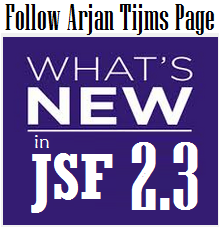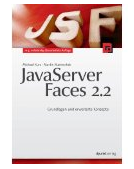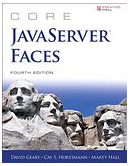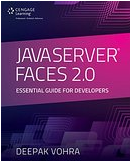[OmniFaces utilities] The
createMethodExpression() method creates a method expression based on the given EL expression, the given return type and the given parameter types, if any. This method returns the created method expression, ready to be used as UICommand#setActionExpression(MethodExpression).Method:
When you need to create a void method expression, you can use a shortcut of the above OmniFaces utilities:
Usage:
In OmniFaces
documentation you can find the below list of examples. These should be enough
to understand how to use the createMethodExpression() method.
Create a
method expression based on the given EL expression, the given return type and
the given parameter types, if any. As an example, the following action method
examples:
public void
submit1()
public
String submit2()
public void
submit3(String argument)
public
String submit4(String argument)
public void
submit5(String argument1, Long argument2)
public
String submit6(Long argument1, String argument2)
can be
created as follows:
createMethodExpression("#{bean.submit1}",
Void.class);
createMethodExpression("#{bean.submit2}",
String.class);
createMethodExpression("#{bean.submit3('foo')}",
Void.class, String.class);
createMethodExpression("#{bean.submit4('foo')}",
String.class, String.class);
createMethodExpression("#{bean.submit5('foo',
0)}", Void.class, String.class, Long.class);
createMethodExpression("#{bean.submit6(0,
'foo')}", String.class, Long.class, String.class);
Per example,
we can programmatically assign the actions to a set of buttons (UICommand).
First we have created the below JSF snippet:
<h:body>
<h:form
rendered="#{!facesContext.postback}">
<h:commandButton value="Shuffle
Action" action="#{commandBean.shuffle()}"/>
</h:form>
<h:form id="actionFormId"
rendered="#{facesContext.postback}">
<h:commandButton
id="action1Id"/>
<h:commandButton
id="action2Id"/>
<h:commandButton id="action3Id"/>
</h:form>
</h:body>
Notice that
we have two forms. The first one contains a button, Shuffle Action. When
this button is clicked, we will programmatically and randomly assign three
different actions (three method expressions: save(), update(), delete())
to the buttons from second form. Moreover, we will set the values for each
button. Each time you will run the application, these three buttons will have
different actions, which are provided from the CommandBean. Complete code
is listed below:
import
org.omnifaces.util.Components;
import
org.omnifaces.util.Faces;
...
@Named
@SessionScoped
public class
CommandBean implements Serializable {
public void shuffle() {
List<String> actionlist = new
ArrayList();
actionlist.add("#{commandBean.save()}");
actionlist.add("#{commandBean.delete()}");
actionlist.add("#{commandBean.update()}");
Collections.shuffle(actionlist);
UICommand command1 = (UICommand)
Faces.getViewRoot().findComponent("actionFormId:action1Id");
UICommand command2 = (UICommand)
Faces.getViewRoot().findComponent("actionFormId:action2Id");
UICommand command3 = (UICommand)
Faces.getViewRoot().findComponent("actionFormId:action3Id");
MethodExpression methodExpression1 = Components.createMethodExpression(actionlist.get(0),
Void.class);
MethodExpression methodExpression2 =
Components.createMethodExpression(actionlist.get(1), Void.class);
MethodExpression methodExpression3 =
Components.createMethodExpression(actionlist.get(2), Void.class);
command1.setActionExpression(methodExpression1);
command2.setActionExpression(methodExpression2);
command3.setActionExpression(methodExpression3);
command1.getAttributes().put("value",
actionlist.get(0));
command2.getAttributes().put("value",
actionlist.get(1));
command3.getAttributes().put("value",
actionlist.get(2));
}
public void save(){
System.out.println("---------------------------Saving----------------------------");
}
public void delete(){
System.out.println("---------------------------Deleting----------------------------");
}
public void update(){
System.out.println("---------------------------Updating----------------------------");
}
}
The below
figure reveals what you will see:











 Arrays
Arrays Converters
Converters

 JSF 2 Tutorials at www.mkyong.com
JSF 2 Tutorials at www.mkyong.com  JavaServer Faces (JSF) Tutorial
JavaServer Faces (JSF) Tutorial 





















Niciun comentariu :
Trimiteți un comentariu